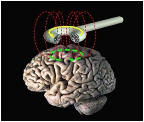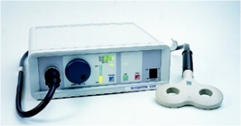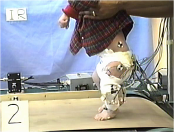

University of Alberta |
|
Motor Control Laboratory |

|
Compared to the brain, little is known about how neurons in the spinal cord are affected by injury to the developing brain in cerebral palsy. We are investigating how neurons in the spinal cord that activate muscles of the leg contribute to excessive and unwanted muscle activity (spasticity) in children with cerebral palsy. We will use large, surface electrodes that have multiple contracts to record 100’s of signals from the muscle. We can then use these signals to isolate the activity of single motor neurons in the spinal cord while children make voluntary contractions. We will also activate the motor neurons in the spinal cord with sensory inputs from the leg by using light electrical stimulation applied through surface electrodes. These findings will tell us what role motor neurons in the spinal cord have in the development of spasticity in children with cerebral palsy and when and how we can intervene to prevent or reduce spasticity. Project funded by the National Institutes of Health Research and Women and Children’s Health Research Institute.
|
|
Early Motor Training in Cerebral Palsy |
|
Spinal Development in Cerebral Palsy |
|
Research Projects |







|
The amount of sensory information travelling to the brain and spinal cord is controlled by specialized neurons in the spinal cord. Here we are studying how this control of sensory transmission is affected by injury to the spinal cord and how this may lead to the development of spasticity and hamper residual movements like walking. With the use of transcranial magnetic stimulation, we can measure how motor pathways from the brain activate neurons controlling sensory transmission. We can also activate these neurons with other sensory pathways, especially ones that convey touch and pain sensations. By understanding how sensory transmission is controlled by spared descending motor pathways and from other sensory inputs, we can then develop new treatments to help control spasticity and promote purposeful movements after spinal cord injury. Project funded by NSERC. .
|
|
Did you know that infants have greater plasticity than adults? Neuronal activity during critical periods of development is crucial to normal development. Cerebral palsy, for example, reduces the number of active neurons from the injured motor cortex during a critical time when tracts from the motor cortex to the spinal cord (corticospinal tract or CST) are developing. Because the CST is essential for skilled movements including walking in humans, this deprivation of activity could lead to permanent impairment of function. The objective of this project is to stimulate the damaged CST in the critical time of a child’s development to improve motor functioning. Babies trained at a critical developmental period (before 2 years) will be compared to babies trained at later developmental stages (>2 years). This project is in collaboration with Dr. Jaynie Yang in Physical Therapy. Project funded by Brain Canada and Canadian Institute of Health Research.
|
|
Control of Sensory Transmission in Spinal Cord Injury |